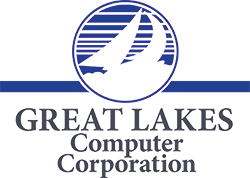[vc_row][vc_column][vc_column_text]
Cloud computing is a major buzzword, and if you’re a small business owner, you’ve probably heard about the time and cost savings this computing model can offer your business. While cloud computing may allow you to save time and cost, it’s not always a perfect IT solution. Before you abandon your current technology model for cloud computing, examine the hidden downfalls of the cloud to ensure you have a balanced viewpoint.
Loss of Control
Chances are you control all of your own technology assets right now. Maybe you maintain your own server, or you have an external hard drive and can access all documents from work or home. Your employees have software installed on their computers that your IT staff maintain, upgrade, and troubleshoot. As it stands, you control your small business computing resources. With software as a service (SaaS), the cloud provider controls all of these resources. This could mean a pesky technology upgrade blocks you from doing the work you need to do, or a cloud security breach compromises your business data. Before jumping into the cloud, examine the security and control offered by the cloud provider. If they don’t meet your standards, don’t switch.
Security
If the cloud is breached, your data will be compromised. Not all cloud providers offer the same level of security. If you use a so-called “public” cloud, i.e. a platform like Google that is available to all, there’s even less transparency regarding security. Before you go to the cloud, ask yourself how much a loss of customer financial information or business data could really cost your business. Then make sure the cloud offers adequate security protection from data loss, improper backup and storage, and malicious attacks. If you’re legally obligated to maintain certain data standards–such as HIPAA or SOX– security should be paramount. Ask the hard questions about how the cloud could impact your compliance.
Standards for cloud computing security are still being developed. One day, security standards will be set that allow for personal control, protection of data to existing standard levels, and other criteria to be met. In many cases, holding off making the switch to cloud computing solutions until the security you need is there may be the best choice for you.
Dependency
It’s easy to get your data into the cloud, but getting it back out may be tricky. Should you choose to migrate to another cloud provider, it may be difficult. Other data dependency disadvantages include quality control, no input on maintenance levels and bug fixes, and no input on disaster recovery.
Learning Curve
No matter how tech savvy your employees are, switching to cloud computing means they must adjust to a new technology platform. Some staff members may be fine adjusting their skill set to the cloud, while others may require hand-holding, repeat trainings, and significant IT support. Where do you and your employees fit on this spectrum? If your current technology setup works fine for your staff members, switching to SaaS provided by the cloud may spell more time lost to training than time gained.
Staff training aside, a new computing system means making many adjustments to your small business model. Your current procedures will need to change. Managed IT Services can lead to major change for your in-house tech staffers, so their workflow will need to change. What role will your in-house IT staff play after the cloud transition? How will workflow for admin, marketing, and other departments change as a result of the cloud? Cloud computing may make some tasks easier, such as email blasts or social media management, but this still spells adjustment for your personnel. If the current business model works well for your staff, the adjustment to the cloud may be an unnecessary distraction.
Summary
Cloud computing and SaaS (Software as a Service) solutions can be a great choice for your business – just don’t jump onto the band wagon before you’ve considered these important cautions.
If you are interested to learn more about evaluating IT solutions “in the cloud,” we highly recommend this FREE ebook from Dell as a must-have guide.

Chapters include:
-
- Defining Cloud Computing and Software as a Service
- Benefits, concerns, privacy regarding using resources in the cloud
- Cloud computing security
- Migrating to and integrating Cloud IT Solutions
- and more…
[/vc_column_text][/vc_column][/vc_row]

